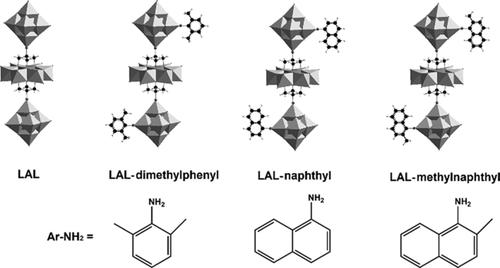Effect of Cation-π Interaction on Macroionic Self-Assembly
Jiancheng Luo, Dr. Kun Chen, Dr. Panchao Yin, Dr. Tao Li, Dr. Gang Wan, Dr. Jin Zhang, Songtao Ye, Xiaoman Bi, Prof. Dr. Yi Pang, Prof. Dr. Yongge Wei*, and Prof. Dr. Tianbo Liu*
[*] J. Luo, Dr. P. Yin, S. Ye, Prof. Dr. T. Liu
Department of Polymer Science, University of Akron Akron, OH 44325 (USA)
Dr. K. Chen, Dr. J. Zhang, Prof. Dr. Y. Wei
Department of Chemistry, Tsinghua University Beijing, 100084 (P. R. China)
Dr. T. Li
X-Ray Science Division, Advanced Photon Source, Argonne National Laboratory, Argonne, IL 60439 (USA), and Department of Chemistry and Biochemistry, Northern Illinois University, DeKalb, IL 60115 (USA)
Dr. G. Wan
Material Science Division, Argonne National Laboratory Argonne, IL 60439 (USA)
X. Bi, Prof. Dr. Y. Pang
Department of Chemistry, University of Akron Akron, OH 44325 (USA)
Angew. Chem. 2018, 130, 4131-4136
DOI: 10.1002/anie.201800409
Publication Date (Web): February 13, 2018
Copyright © 2018 Wiley-VCH Verlag GmbH & Co. KGaA, Weinheim
*E-mail: tliu@uakron.edu; yonggewei@tsinghua.edu.cn;

A series of rod-shaped polyoxometalates (POMs) [Bu4N]7[Mo6O18NC(CH2O)3MnMo6O18(OCH2)3CNMo6O18] and [Bu4N]7[ArNMo6O17NC(CH2O)3MnMo6O18(OCH2)3 - CNMo6O17NAr] (Ar = 2,6-dimethylphenyl, naphthyl and 1- methylnaphthyl) were chosen to study the effects of cation-p interaction on macroionic self-assembly. Diffusion ordered spectroscopy (DOSY) and isothermal titration calorimetry (ITC) techniques show that the binding affinity between the POMs and Zn2+ ions is enhanced significantly after grafting aromatic groups onto the clusters, leading to the effective replacement of tetrabutylammonium counterions (TBAs) upon the addition of ZnCl2. The incorporation of aromatic groups results in the significant contribution of cation-p interaction to the self-assembly, as confirmed by the opposite trend of assembly size vs. ionic strength when compared with those without aromatic groups. The small difference between two aromatic groups toward the Zn2+ ions is amplified after combining with the clusters, which consequently triggers the self-recognition behavior between two highly similar macroanions.

